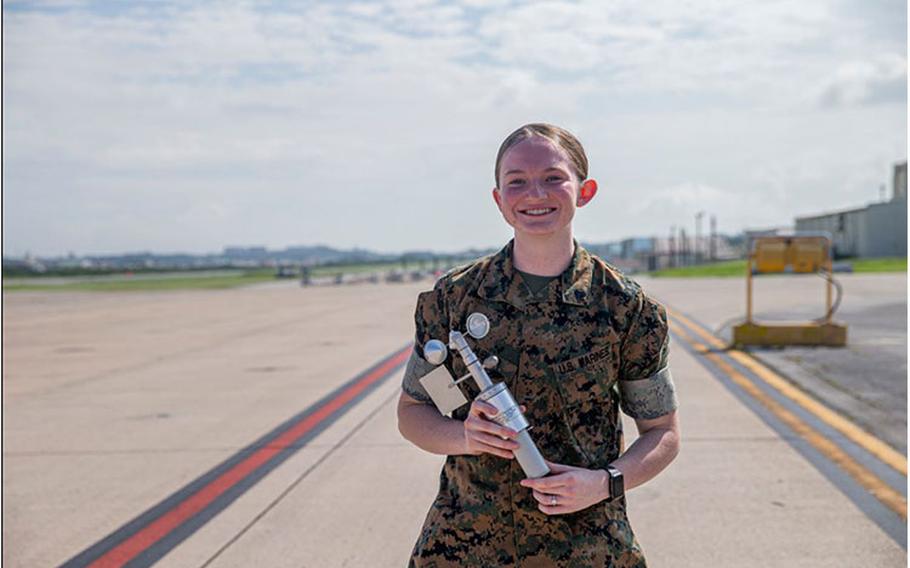Spotlight!
Faces of MCIPAC: Cpl. Julia Hubler - Meteorological and oceanography analyst forecaster at MCAS Futenma
Marine Corps Installations Pacific August 23, 2021

Photo by Lance Cpl. Alex Fairchild ()
MARINE CORPS AIR STATION FUTENMA, OKINAWA, Japan --
As a storm system moves in on the radar, a Marine quickly records every precise detail including its movement, speed and stability. Analyzing the data, she conducts a brief with pilots and commanders planning to use the flight line with a tactical suggestion on whether it is completely safe to fly or not.
Cpl. Julia Hubler is a meteorological and oceanography analyst forecaster with Headquarters and Headquarters Squadron, Marine Corps Air Station Futenma. METOC analyst forecasters analyze atmospheric, space, climatic and hydrologic intelligence which is used to assist commanders and pilots make tactical decisions in regards to flights and training.
"As METOC forecasters, we gather and analyze weather data to ensure the flight line working conditions are safe," said Hubler. "This information is critical in ensuring mission readiness and safety for service members in Okinawa. Additionally, we send out adverse weather warnings to commanders and units when needed."
Hubler explained that her work has the capability to extend farther than just air station personnel. She said that in terms of training, she provides weather forecast information for ground units in order to make sure the conditions are fit for the equipment they may be operating.
One of the biggest challenges Hubler faces is the unpredictability of weather. Storm systems and storm cells are constantly changing in size and motion, and it is her responsibility to keep track of their patterns and update her recommendations.
“By providing meteorological information, we are simultaneously providing critical safety for all air station personnel on Okinawa,” said Hubler. “It is our priority. Pilots and commanders need to know every detail about the conditions of their flight and whether or not it is fit for them to get up in the air.”
To become a fully effective METOC forecaster is long and meticulous – almost three years of training alone. The initial schooling in Biloxi, Mississippi, is 10 months long and is followed by a five-month observer qualification as well as a yearlong forecaster qualification upon arriving to a duty station.
“As a seasoned noncommissioned officer, Cpl. Hubler is professional, dependable and trustworthy,” said Sgt. Jay Armijo, a METOC analyst forecaster with H&HS, MCAS Futenma. “This is a job where you need to be able to effectively communicate and inform commanders, and she goes above and beyond not only with that but everything she does.”
Armijo, a native of Las Vegas, Nevada, explained that being a METOC analyst forecaster is a job that requires effectively communicating and informing commanders. He said that Hubler not only does that but goes above and beyond in her work and everything she does.
“This is one of those jobs where you can see the difference you are making in the safety and effectiveness in your unit,” said Hubler. “I am honored to be a small but critical part of the MCIPAC mission.”